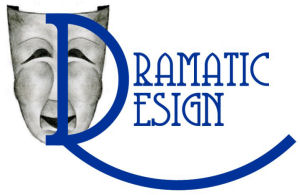 This is a guest post by Cindy Bidar.
This is a guest post by Cindy Bidar.
Every website has two audiences: the human type and the computer type, and they form a symbiotic relationship. Without one, the other cannot survive.
The computer audience is made up of these little programs we call spiders. Spiders work for the search engines, crawling pages and indexing what they find there. They are totally objective, looking only at the words they find and, using a complicated algorithm no one understands, and assigning a “value” to your page by which your human audience can find it.
The human audience is more subjective, easily distracted, and quick to jump to the next page (or back to the previous one) if they don’t find what they are looking for in the first three seconds after they arrive. They don’t just read the words, they see the whole page and form an opinion of you, your credentials, and your authority–all from a single glance.
How can you possibly write one page for these two very different creatures? That is the art of writing for the web.
Today we’ll look at keeping those fickle humans happy. Next week we’ll take a look at the spiders and how to feed them the information we want them to have, so that they can attract the right humans to our pages.
Three Ways to Format Your Text for Easy Scanning
Web readers are a fast moving breed. They land on a page, scan it for pertinent information, and if they don’t find it they are very quick to move on. Your job is to make it easy for your readers to find what they are looking for, and pleasant for them to stay.
- Use heading tags to break a longer page into sections. In WordPress, you would typically use the <h3> tag (we’ll talk about why in next week’s episode). Make sure your headings are descriptive enough so your reader knows what that section is about.
- Lists (like this one) give your readers lots of information in a small space. Is your visitor looking for popular cruise destinations, presidents of the United States beginning in 1900, or the minerals mined in Death Valley? A list is the perfect tool.
- Keep your paragraphs short. Large blocks of unbroken text will turn a reader away almost as fast as hot pink words on a black background. When in doubt, start a new paragraph.
Every Picture Tells a Story
Pictures add interest to your pages and serve to break up long pages of boring text. Wall Street Journal readers might like pages and pages of nothing but text, but web readers need someplace to rest their eyes, and a well chosen picture is a good landing spot.
Use your caption and <alt> text wisely, and you can improve your search engine ranking as well.
One word of caution about pictures, though: Learn about licensing. Just because a picture is posted on the Internet does not make it free for use on another web site.
Finally, the Words
Writing for the web is not that much different than writing for print. Vary your sentence structure; use active verbs; avoid using adverbs (really, very, actually, quickly, simply, and most other words that end in “ly”). You can’t go wrong with Strunk and White’s Elements of Style. Get yourself a copy.
One last thing: Writing for the web tends to be less formal than writing for print. Unless you’re writing a white paper or a news story, stick with first and second person. Your readers will be more engaged if they feel you’re speaking directly to them rather than some generic audience.
Do you have a Monday Marketing Tip you’d like to share? Leave a comment, or if you post on your own blog, leave us a link below!
Cindy Bidar is a freelance copywriter specializing in web content. She blogs about writing, marketing, and anything else that strikes her fancy at CindyBidar.com.

 As you will see, I utilize the back of my card, also. There is a debate to be made for/against this practice. Some people feel that you should leave the back blank to write a note; however, in this case, I chose to put the back of my card to work for me. I chose a contrasting color, so it will catch the eye, should someone see the back first. The light blue lettering isn’t as harsh on the eyes as a white was, but contrasting enough to be easy to read. By choosing a yellow for the offer, people will immediately be drawn to read my offer.
As you will see, I utilize the back of my card, also. There is a debate to be made for/against this practice. Some people feel that you should leave the back blank to write a note; however, in this case, I chose to put the back of my card to work for me. I chose a contrasting color, so it will catch the eye, should someone see the back first. The light blue lettering isn’t as harsh on the eyes as a white was, but contrasting enough to be easy to read. By choosing a yellow for the offer, people will immediately be drawn to read my offer.
